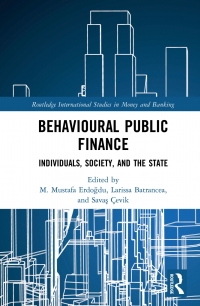Question
Problem 1: (6.2/224 Silver et.al. (1998) Book) The demand pattern for another type of filter is: Jan. Feb. Mar. Apr. May June 18 31 23
Problem 1: (6.2/224 Silver et.al. (1998) Book)
The demand pattern for another type of filter is:
| Jan. | Feb. | Mar. | Apr. | May | June |
| 18 | 31 | 23 | 95 | 29 | 37 |
| July | Aug. | Sept. | Oct. | Nov. | Dec. |
| 50 | 39 | 30 | 88 | 22 | 36 |
Those filters cost the company $4.75 each; ordering and carrying costs are $35 and 0.24 $/$/year respectively. The variability coefficient equals 0.33. Use the Silver Meal heuristics to determine the sizes and timing of replenishments of stock.
Variability coefficient: A parameter to determine when to use heuristics method, when demand pattern having variability exceeds some threshold value, it makes sense to change to a heuristic. It is Variability coefficient (VC). In particular, if VC <0.2, Use simple EOQ. Otherwise, Use heuristic. .
Problem 2: (6.10/224 Silver et.al. (1998) Book)
Consider a company facing a demand pattern and costs as follows:
| Month | Sequential number | Requirements (units) |
| January | 1 | 20 |
| February | 2 | 40 |
| March | 3 | 110 |
| April | 4 | 120 |
| May | 5 | 60 |
| June | 6 | 30 |
| July | 7 | 20 |
| August | 8 | 30 |
| September | 9 | 80 |
| October | 10 | 120 |
| November | 11 | 130 |
| December | 12 | 40 |
|
| Total | 800 |
Given: Fixed ordering cost A = $25.00, carrying cost r (per month) = $0.05 (Carrying costs are very high in this industry) and unit variable cost v = $4.00.
Using a three-month decision rule, the replenishment schedule and associated costs are as follows:
| Month | 1 | 2 | 3 | 4 | 5 | 6 | 7 | 8 | 9 | 10 | 11 | 12 | Total |
| Starting inventory | 0 | 150 | 110 | 0 | 90 | 30 | 0 | 110 | 80 | 0 | 170 | 40 |
|
| Replenishment | 170 | 0 | 0 | 210 | 0 | 0 | 130 | 0 | 0 | 290 | 0 | 0 | 800 |
| Requirements | 20 | 40 | 110 | 120 | 60 | 30 | 20 | 30 | 80 | 120 | 130 | 40 | 800 |
| Ending inventory | 150 | 110 | 0 | 90 | 30 | 0 | 110 | 80 | 0 | 170 | 40 | 0 | 780 |
Total replenishment costs: $110.00
Total carrying costs: $156.00
Total replenishment + carrying: $256.00
a/ Construct a replenishment schedule and calculate the associated costs using the Fixed Economic Order Quantity method.
b/ Repeat using the Wagner-Whitin algorithm.
c/ Repeat using the Silver Meal heuristic.
d/ Repeat using the Least Unit cost method.
e/ Repeat using the Part-period balancing method.
f/ Repeat using the Periodic Ordering Quantity method.
Problem 4:
A component used in a manufacturing facility is ordered from an outside supplier. The component is used in a variety of finished items and therefore the demand is high. Forecast demand (in thousands) over the next 8 weeks is:
| Week | 1 | 2 | 3 | 4 | 5 |
| Demand | 21 | 33 | 29 | 15 | 9 |
Each component costs 70 cents and the inventory carrying charge rate is 0.56 cents ($0.0056) per unit per week. The fixed order cost is $300. Assume instantaneous delivery.
What is the ordering policy recommended by DP algorithm?
Step by Step Solution
There are 3 Steps involved in it
Step: 1

Get Instant Access to Expert-Tailored Solutions
See step-by-step solutions with expert insights and AI powered tools for academic success
Step: 2

Step: 3

Ace Your Homework with AI
Get the answers you need in no time with our AI-driven, step-by-step assistance
Get Started


